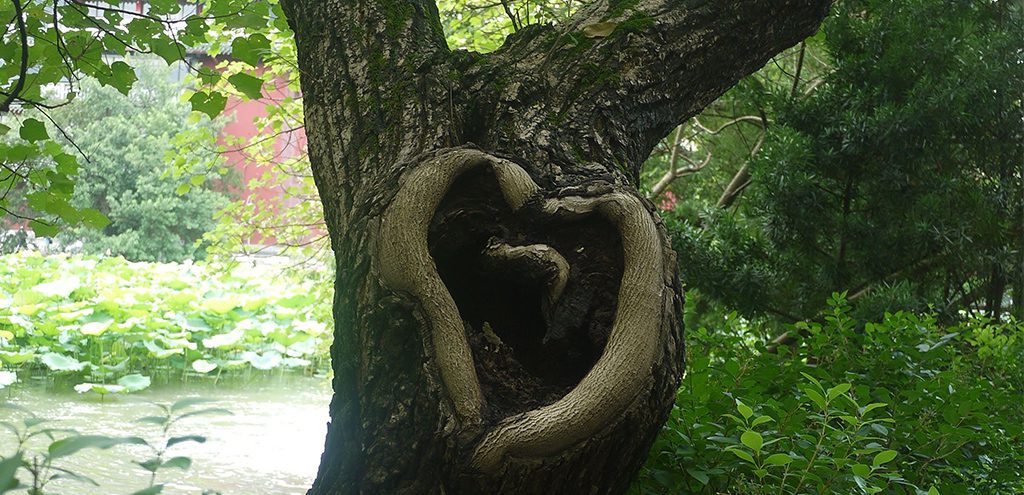
Valentine’s Day is like coconut: you either love it or hate it. One thing’s for sure – we all love trees! Here are some urban hardy trees with heart shaped leaves to spark joy this Valentine’s Day.
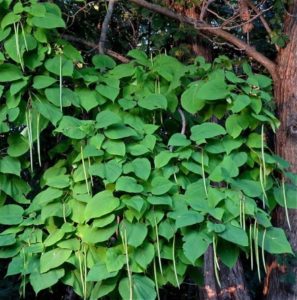 Northern Catalpa (Catalpa speciosa)
Northern Catalpa (Catalpa speciosa)
A showy medium-sized shade tree often known as “cigar trees,” catalpas are typically planted in urban areas thanks to their tolerance of most soils. Patience is a virtue with catalpas, as it takes an average of seven years to flower. However, their unprecedented springtime show of large, white, orchid shaped flowers from which develop slender, long green seedpods that darken and drop in fall make it all worth the wait. Their giant heart-shaped leaves — up to 12 inches long and 8 inches wide — make this tree particularly appropriate for valentine’s day and their fast growth rate and canopy potential make them particularly appropriate for urban properties. Northern Catalpas are available for free (!) through our residential planting program, RiverSmart Homes. You can also get up to $100 back for planting this tree yourself through our tree rebate program.
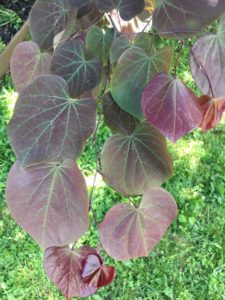 Eastern Redbud (Cercis canadensis)
Eastern Redbud (Cercis canadensis)
A local favorite found in forests, fields and yards – the redbud usually blooms in late February or March. Small, pinkish-purple flowers are produced in unbelievable profusion along the branches (and even on the trunk) before their heart shaped purple leaves appear. A fast grower, redbuds can reach 15 – 25 feet in height in approximately 15 years. For this reason, it is often planted under power lines – a plus in a city like ours. Not only are redbuds available through our residential planting program RiverSmart Homes, you can also get up to $50 back for planting this tree yourself through our tree rebate program!
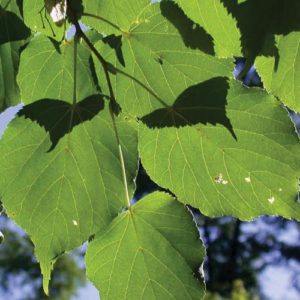 American Linden (Tilia americana)
American Linden (Tilia americana)
The American linden, also known as “basswood,” is a stately shade tree native to North America. It is mostly known for its small, yellow clusters of flowers that bloom in the summer at the tip of its branches – a fragrant attraction for honeybees, eager to extract pollen for their production of sweet honey. It makes a particularly good shade tree thanks to its large, bold heart shaped leaves that turn a vibrant shade of yellow in the fall. American lindens originally lined Massachusetts Avenue during much of the nineteenth and early twentieth centuries. Recently, plantings by the Urban Forestry Division and the work of the nonprofit group Restore Mass Ave have aimed to restore and protect the historic integrity of the American linden along the avenue. You can add one to your property for free (!) through our residential planting program, RiverSmart Homes. You can also get up to $100 back for planting this tree yourself through our tree rebate program.
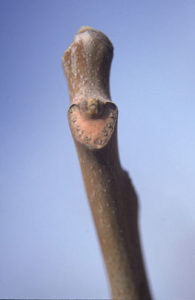
Bonus: Tree-of-Heaven (Ailanthus altissima)
Tree of Heaven (Ailanthus altissima) is known by a number of names – stinking sumac, Chinese sumac, varnishtree and stinktree. No matter what you call it, it is no angel. The tree of heaven is a rapidly growing deciduous tree native to China. Its ease of establishment, rapid growth and absence of insect or disease problems, unfortunately, made it popular when planning urban landscaping. It is a prolific seed producer and can thrive in even the most unfavorable conditions with little management – making it a common, nasty, invasive tree found throughout the U.S. What does this tree have to do with Valentine’s Day? After a leaf falls off a twig, it creates what is known as a leaf scar. The Tree-of-Heaven is known for being invasive – and for its large heart shaped leaf scars that are easy to spot when it’s without leaves.

